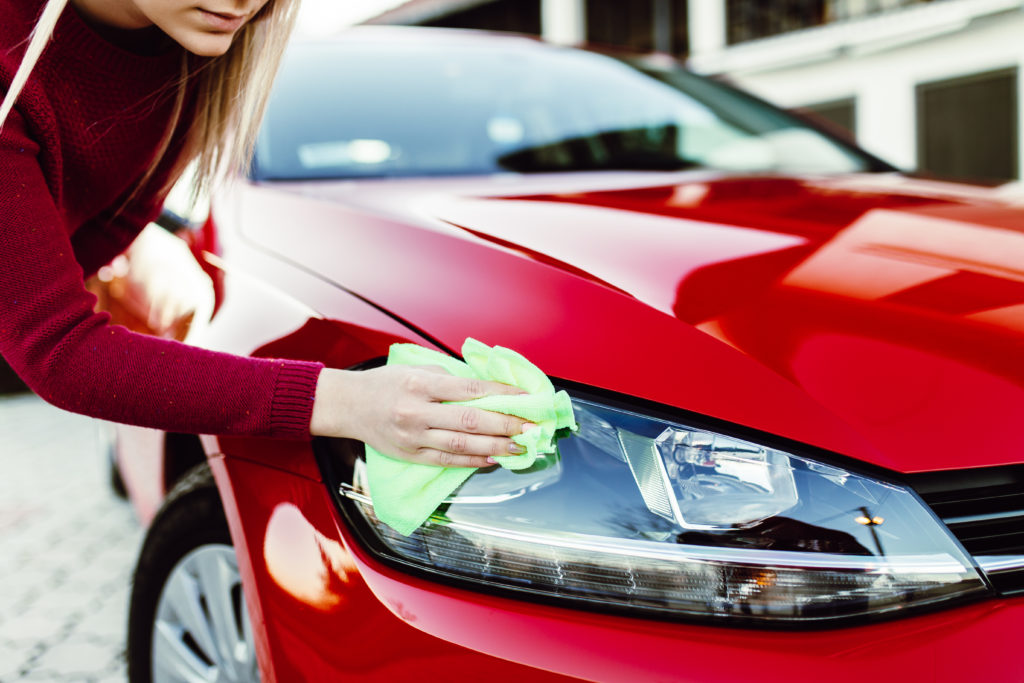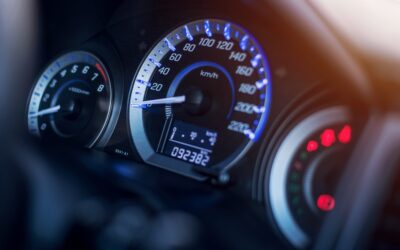You have to keep your headlights clean. If you let them get too dirty, your lights will be less effective at illuminating the road ahead of you in the darkness. Cloudy and dirty lights can also make it harder for other drivers to see you.

Headlights are an essential car safety feature, so you have a legal obligation to keep them clean. The Road Vehicles Lighting Regulations 1989 make it clear that you have a duty to keep any lights on your car clean. This includes “every lamp, reflector, rear marking and device” – so that goes for your indicator lights, too. The Highway Code also states that “lights, indicators, reflectors, and number plates MUST be kept clean and clear.”
What are the penalties for driving with dirty headlights? You could get a penalty charge notice with a fine of up to £100. But if you end up in court, your fine could be up to £1,000.
So it’s vital to keep your headlights clean. In this post, we’ll explain how to clean your headlights in the safest and most effective way possible.
My Car Has Automatic Headlight Washers!
Many modern cars feature bult-in headlight washer. They spray your headlights at the same time as your windscreen washers. It’s a very helpful system, but it’s not always effective. Not many headlight washers feature wipers. This means they can only really clean light and loose dirt, leaving tougher dirt in place.
Plus, headlight washer jets can get blocked, and the fluid lines can get damaged. So you mustn’t depend on your car’s automatic headlight washers. Don’t get complacent. Commit to regularly cleaning your car’s headlights, just like you would any other part of your car.
Cleaning Car Headlights with Water
Yes, with most modern cars, a cloth and warm water will do the job. Just make sure you don’t leave behind any liquid residue after cleaning. This can create water stains, which can itself limit your lights’ effectiveness.
For a more thorough job and a more sparkly finish, use car shampoo. Avoid using washing-up liquid and other household cleaners, though. They often contain abrasives that could scratch your headlights.
Can You Clean Dirty Car Headlights With Toothpaste?
Toothpaste is great for cleaning tougher dirt off headlights. This is because toothpaste usually contains soft abrasives like baking soda. This, combined with a lot of elbow grease, can clear away tougher dirt without leaving any scratches or other damage.
Just apply the toothpaste to the headlight with a small brush – like a toothbrush! Then keep rubbing until you break up the dirt, before wiping away the residue with warm water and a cloth.
Can I Use Sandpaper to Clean Headlights?
You can also buy dedicated headlight cleaning kits, many of which feature sanding discs. They’ll contain clear and detailed instructions on how to use sandpaper to clean your headlights. But even with these instructions, it’s all too easy to do significant damage to your headlights when you’re using sandpaper. So proceed with caution!
When it comes to cleaning headlights, only consider using sandpaper for the toughest and most persistent of dirt. And if you’re at all worried about doing any damage, then don’t do it!
It can cost a lot of money to replace damaged headlights. On modern cars, headlights are sealed and self-contained units. So often, if there’s even the slightest bit of damage, you’ll need a wholesale replacement. And this can cost you hundreds of pounds.
How to Clean Cloudy & Dirty Headlights
On older cars, the headlight casing can get discoloured, making the headlights appear cloudy. You can clean cloudy headlights using a variety of household items. We discussed using toothpaste above, which is great for treating dirty headlights. But when dealing with oxidised and discoloured headlights, try using WD40.
Get a microfibre cloth and fold it twice. Spray it twice with WD40, and wipe the surface of your headlights. The WD40 may fill the tiny cracks between the oxidised parts of your headlights, leaving them looking new again.
Headlights can become cloudy for any number of reasons. Sometimes it’s just due to a build-up of dirt. Sometimes it’s oxidisation, which can make the headlights’ casing appear yellow. Water vapour can also cause problems if your headlights’ watertight seals break. So you might want to get these checked.
Cleaning Very Dirty Headlights with Vinegar and Baking Soda
The combination of vinegar and baking soda is slightly more abrasive than toothpaste, so it’s great for cleaning foggy headlights. This magical formular can also treat damage from UV light, road debris, and salt.
Add 2 tablespoons of vinegar to 200ml of baking soda. Apply it softly in circular motions, with a microfibre cloth. Don’t rub too hard or for too long, or you could damage your headlights. And once you’re done, wipe your headlights clean with a new microfibre cloth.
What If I’ve Got Glass Headlights?
Significantly older cars have glass headlights instead of plastic headlights. You should take care when cleaning then, to avoid scratching or chipping the glass. But in many ways, glass headlights are easier to take care of than modern plastic headlights. Glass is totally non-reactive, so you never have to worry about it getting oxidised, or damaged by UV rays. So really, it’s just a case of keeping them clear of dirt, and of looking out for cracks and chips from road debris.
If Your Headlights Just Won’t Get Clean
If you’ve tried everything and your headlights are still cloudy or discoloured or faded, then it might be time to change the bulb. And failing this, it might be time for new headlights. As we said above, it can be expensive to replace headlights. But they’re such essential car safety features that any cost is justified. And that’s to say nothing of the high costs associated with driving with insufficient headlights.
Maintaining your car is essential for safe motoring. A good way to know what you may be able to check for yourself regularly is to understand what is checked during your car’s MOT. You may also want to consider adding breakdown cover to your Go Girl car insurance quote for total peace of mind.



